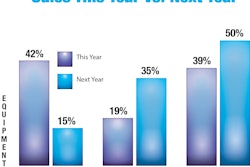Lisa P. Jackson, the current EPA Administrator, has made protecting children’s health a top priority. As such, the Office of Chemical Safety and Pollution Prevention (OCSPP) has launched an initiative to achieve greater adoption of Integrated Pest Management (IPM) in schools.
EPA states that more than 53 million children and 6 million adults spend significant amounts of time in schools. They face risks associated with not only exposure to pesticides, but also pests themselves. Full implementation of an IPM program is cost effective, reduces exposure to both pests and pesticides, and reduces pesticide use and complaints. (IPM is a sustainable approach to managing pests by combining biological, cultural, physical and chemical tools in a way that minimizes economic, health and environmental risks.)
Background on EPA pushing IPM. Since 1996, EPA has invested more than $3.2 million in extramural resources to support projects designed to advance the cause of S(school)IPM. EPA says these investments have yielded many successes, including the development of what’s referred to as “The Monroe Model” for IPM.
In 2008, through a Pesticide Registration Improvement Renewal Act grant, the IPM Institute of North America led an effort to initiate SIMP coalitions throughout the U.S. The goal is to implement high-level IPM in all school districts nationwide by 2015. Four working groups identified one or more states in which to initiate a coalition:
- North Central Region – Missouri, Nebraska, Illinois, Indiana, Ohio
- Northeastern Region – Pennsylvania, Vermont
- Southern Region – Alabama, North Carolina
- Western Region – Colorado, Arizona, Washington state
In December 2010, EPA’s Office of Chemical Safety & Pollution Prevention (OCSPP) launched an initiative to promote the expanded use of IPM in schools. The effort was intended to accelerate the move from mere IPM demonstration to actual implementation.
Now EPA is working to create the circumstances whereby the adoption of IPM by schools is more likely. So how is EPA planning to do that?
Gaining adoption of IPM going forward. EPA’s vision is that all of the nation’s children be covered by a verifiable and ongoing school IPM program. To achieve greater adoption of IPM practices, EPA will establish and strengthen partnerships with a variety of stakeholders, including additional EPA offices around the country, other federal agencies, states, local governments, tribes, universities, industry, and non-governmental organizations dedicated to IPM.
EPA will compile existing information and tools into a single, accessible location for school officials looking to adopt IPM practices.
EPA will draw upon existing partnerships through the Pesticide Environmental Stewardship Program.
EPA will establish IPM Coordinators in each of its 10 regions. The Coordinators will play a key role in encouraging schools to adopt IPM practices. Coordinators will also draw on existing relationships with SIPM change agents, states and tribes in their given regions. Coordinators will allow SIPM activities to be tailored to address regional concerns, while still remaining aligned with national goals.
A Center of Expertise for School IPM will also be established. The Center will provide leadership and expertise to help ensure that the goal of implementing IPM programs across the country is achieved. The Center will be located in Dallas, TX, and will be established in early FY13.

![Doosan Bobcat Wacker Neuson Stack 2ec Js Pb V6e[1]](https://img.greenindustrypros.com/mindful/acbm/workspaces/default/uploads/2025/12/doosan-bobcat-wacker-neuson-stack2ecjspbv6e1.CPyyz8ubHn.png?auto=format%2Ccompress&bg=fff&fill-color=fff&fit=fill&h=100&q=70&w=100)








![Doosan Bobcat Wacker Neuson Stack 2ec Js Pb V6e[1]](https://img.greenindustrypros.com/mindful/acbm/workspaces/default/uploads/2025/12/doosan-bobcat-wacker-neuson-stack2ecjspbv6e1.CPyyz8ubHn.png?ar=16%3A9&auto=format%2Ccompress&bg=fff&fill-color=fff&fit=fill&h=135&q=70&w=240)








